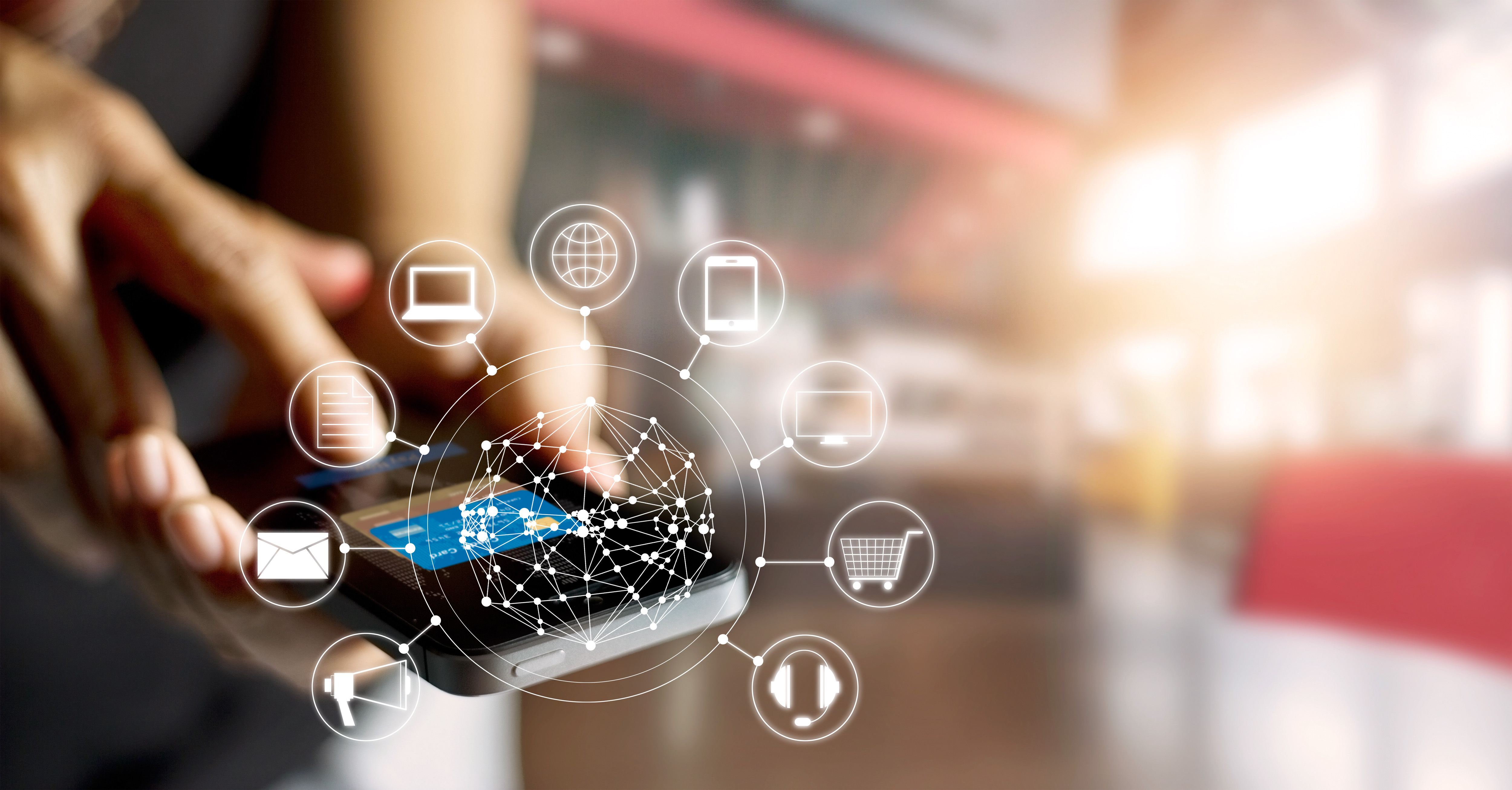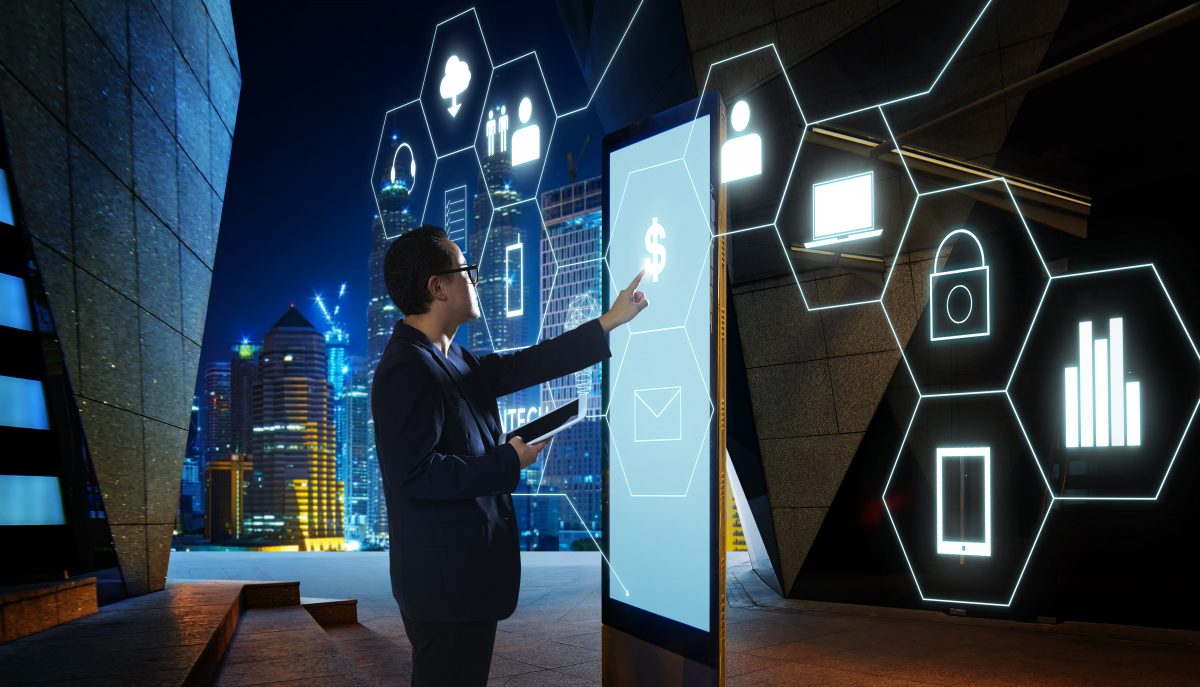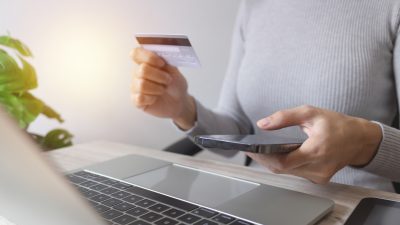Digital banking or electronic banking is the future of the banking sector, with more and more functionalities and possibilities
Digital banking, the virtual and infrastructure transformation of banking telecommunications, is increasingly used. Its ubiquity, accessibility, speed, availability, security and the diversity of available functionalities have clearly attracted users. What is digital banking? What are its strengths?
Learn about the fastest, simplest and most secure payments in digital banking.
What is digital banking?
Digital banking, also called electronic banking, online banking or virtual banking, is a version of banking that operates through digital means, accessible from computers, tablets and cell phones. Although these terms are used synonymously, they have slight differences and emerged at different times:
- Digital banking. Formally, banking that is not analog.
- Electronic banking. Banking that is carried out by electronic means.
- Internet or online banking. Banking that uses the network to function.
- Virtual banking. Banking that does not require a physical branch.
The latter is, increasingly, the default option of customers, who “take” banking applications wherever they go. The mobile app is the queen of the sector. One way to look at digital banking is as the sum of traditional banking plus internet plus devices. Any banking or banked products that can be accessed online will be part of digital banking.
Digital channels have existed for years, if not decades (in Spain, the first phone banking service was launched in 1983), continuously improving to give customers more autonomy. However, the real change of use took place as a result of deploying the digital channel on smart mobile devices. At present, a customer can open accounts, send money or set goals from their cell phone, anytime, anywhere.
How does digital banking work?

Digital banking consists of transferring to the virtual plane any operations that were previously carried out in branches. But the following should be mentioned:
- Many digital banks continue to operate physically with branches, ATMs and other customer touchpoints.
- The change of platform has been associated with a multiplication of functionalities that did not exist before.
Digital banking works through devices and the internet, so users need an electronic device and network connection. This type of banking works on the telecommunications network, of which it is a user. Without this dense network of servers, cables and antennas it would be impossible to deploy the infrastructure.
Broadly speaking, banking applications are located on networked servers, to which the end user connects from their terminal. When they click on the screen, for example to check their last account activity, the electronic signal travels to the nearest antenna (Wi-Fi or a telecommunications station) from which it is sent to the bank’s server.
Once there, the order is executed. The files requested by the customer are located, packaged and sent back. Less than a second after clicking on the screen, the user has all their activity available. Digital banking is so fast because telecommunications are.
The open banking of digital banking
Open banking is a business model in which data can be exchanged in the financial ecosystem, within digital banking. There would be no open banking without digital banking, albeit this new business model has revolutionized the concept of virtual banking, by enabling personalization, creating numerous products and services and democratizing banking.
Open banking can be considered the latest iteration of digital banking, in a format regulated by standards like the PSD2 that, by endowing the sector with stability, has allowed the application of advanced tools such as APIs and various financial transparency mechanisms. This was among the sectors that underwent the most changes with open banking.
With open banking, not only have new financial products emerged, their cost has also been reduced. Also, open banking facilitated financial inclusion, improved the customer experience, increased competition, energized the banking development sector and increased (substantially) security for the user.
The advantages of digital banking
The advantages of digital banking go back several decades, when it was first possible to complete the first phone transfers with a call. With the development of the cell phone network, the hardware and software of devices, and the different security and usability mechanisms of mobile applications, the advantages have kept growing:
- 24/7 availability. With digital banking, schedules and customer lines disappear. You can consult and operate at anytime, anywhere. With few exceptions, you can do everything from your computer or cell phone.
- Greater accessibility. Not having to visit the branch means greater accessibility for many users, since they do not have to adapt their schedules to the bank’s physical opening times. This is particularly useful for rural or small municipality users, as well as groups with disabilities that involve physical limitations.
- Lower costs, greater savings. Digital banking has a cost, but it is lower than face-to-face banking. These lower costs translate into savings for customers.
- Increase in transparency. Users of digital banking have all the documentation at their fingertips. With a couple of clicks, you can access all the technical specifications of your accounts, services, conditions, and your assets or activity. The terms are clearer, and there is more time to consider them (compared to arranging contracts for products and services face-to-face).
- More security in operations. Digital banking has fostered greater banking security, which is heavily regulated. Users have electronic signature systems, PINs or keys, a prerequisite for operations. It is also possible to block cards remotely if lost or stolen.
- Customized products and services. With the development of the digital ecosystem, it is also possible to design mass products that are adapted to the user. This focus on the customer was something impossible in previous versions of banking.
What operations can a digital banking customer do?

Digital banking allows you to perform operations such as:
- Turn cards off or on. In just a couple of clicks.
- Set goals. Set savings goals and targets.
- Pay using your cell phone. Use your phone as if it were a card (NFT technology, BBVA Smartpay) or follow electronic steps with Bizum and transfers.
- Turn mobile money into cash. With the BBVA app, you can send money to an ATM so that it can be used by your chosen recipient.
- Request a turn with a teller. This saves waiting time when you go to the branch.
You can also access more advanced services:
- Contact managers. From the BBVA app, you can contact managers to answer questions and help with the process.
- Exchange currencies. To go pick them up at an branch when needed.
- Remote signing. Safely and conveniently.
- My everyday business. An intuitive tool to control expenses and manage accounts.
- BBVA Valora. Tool to learn the estimated price of the house you would like to buy, as well as the price of others nearby.
- Virtual Correspondence. To access all your financial products or operations.
Digital banking in Spain
Digital banking has not stopped growing in Spain. In 2021, data from the Bank of Spain shows that two out of three adult Spaniards made use of electronic banking. If we focus on the young population between 25 and 34 years old, the percentage rises to almost 80%. This growth is partially explained by the pandemic, which acted as an driver of digital innovation. However, this is a clearly defined path that would have come sooner or later.
Within digital banking, banking apps, like BBVA’s, lead all the rankings if compared to other access methods: face-to-face, telephone or through the computer. It’s no wonder that neobanks have grown remarkably by focusing solely on the fastest growing sector. Nevertheless, three out of four accounts are still with traditional banks.
The digital transformation of the financial sector with digital banking
The financial sector has been one of the fastest growing sectors during the pandemic, and sometimes faced growth problems derived from an unforeseen scale-up (although not as much as streaming platforms, which were saturated and without capacity and had to lower the resolution of their broadcasts). In fact, There was an increase in almost all metrics for the financial sector.
An interesting report by Funcas points out the changes in the use of digital banking and the financial sector. Pre-pandemic, 17% of users accessed online banking every day, now 36% do. It has doubled, and face-to-face banking has seen its face-to-face appointments halved.
With the pandemic, a revolution was brought forward, which had not been far off in the future. More and more tools and functions are offered by digital banking for easy daily use. This latest data on access to banking leaves us with a clear conclusion: the future is digital.




























